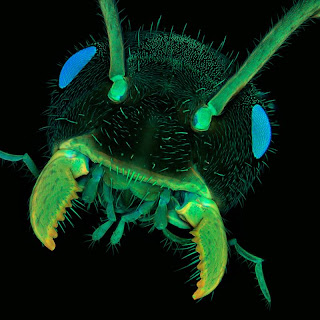The Nikon Small World Photomicrography Competition lets us see beyond the capabilities of our unaided eyes. Almost 2000 entries from 70 countries vied for recognition in the 37th annual contest, which celebrates photography through a microscope. Images two through 21 showcase the contest's winners in order, and are followed by a selection of other outstanding works. Scientists and photographers turned their attention on a wide range of subjects, both living and man-made, from lacewing larva to charged couple devices, sometimes magnifying them over 2000 times their original size. -- Lane Turner
 |
|
|
 |
|
|
 |
|
|
 |
|
|
Source : Boston.Com - Big Picture







No comments:
Post a Comment
Silahkan komentar dengan santun & tidak mengandung spam, terima kasih.